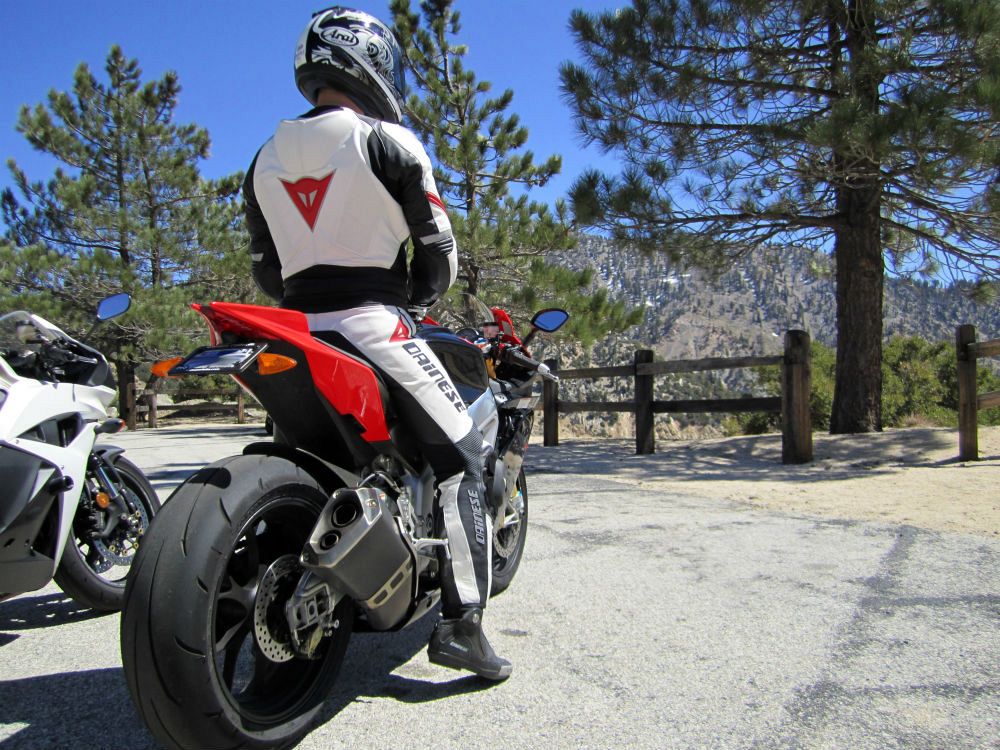The coefficient of friction is greatest for our tires at the point just prior to a slide, and it decreases by 20-30% as soon as you start sliding. This, in part, because a sliding tire generates so much heat at the contact patch that the rubber there begins to liquefy. [Actually, dynamic coefficient of friction is always lower than static coefficient of friction.] (Curiously, it turns out that asphalt actually melts as well and your skidding tire cuts a trench in it as a result.)
Clearly, then, in order to make the fastest stop possible you want to use enough brake to 'almost' make the tires slide. You do not want to ever 'lock' your brakes, then, right?
Well, this is true in almost all cases. True enough, at least, that it is held to be gospel in almost every discussion of stopping a motorcycle that I have ever participated in. But there are times when you can stop faster if you lock those brakes.
Before getting into the details about this let me make a few points that should be obvious:
- If you lock your front brake you lose ALL steering control.
- If you lock your rear brake you lose stability for about 80% of your motorcycle.
- If you can stop fast enough without locking your brakes you should do so.
- The odds of dumping your bike are many times greater if you lock your brakes (either of them) than if you do not.
- Stopping performance is a function of your brakes, your tires, and the ROAD SURFACE.
So, when does locking one or more of your brakes make sense? ONLY if you must stop as quickly as possible to avoid a major accident and the road surface is not firm! That is, in order to avoid serious injury when riding on snow, loose gravel, or sand! Further, ONLY IF YOU ARE driving in a straight line!!!
It should be obvious that because the odds of dumping your bike goes way up whenever you lock a wheel, you would almost always want to use a more gentle touch on your brakes - indeed, in any situation that does not call for fastest stop possible.
When you stop the rotation of your tire in a soft surface environment (like snow, sand or loose gravel), that wheel will not merely ride over the surface. It will plow through the material and in so doing it creates a 'dam' of the material in front of itself. This 'dam' grows and provides rather a substantial, and growing, amount of resistance that is a greater (by far) stopping force than whatever traction your rotating tire could provide by rolling over the material.
Since you will lose all steering control if your front brake is locked, you must straighten the bike to vertical before you grab your binders or you will dump the bike! If you are able to allow your rear tire to continue to spin while doing this then you should as this will provide gyroscopic stability for the majority of your bike until you are moving very slowly.
Even in a situation in which failing to stop soonest puts your life in jeopardy, locking BOTH brakes is NOT the way to go, in my opinion. (I don't think it EVER makes sense to aggressively use your rear brake.)
Mind you, locking your front brake to stop as quickly as possible is ONLY TRUE if the road surface is loose!!! Any normal road surface condition requires that you NOT lock either of your brakes in order to stop quickest.










24
Comment